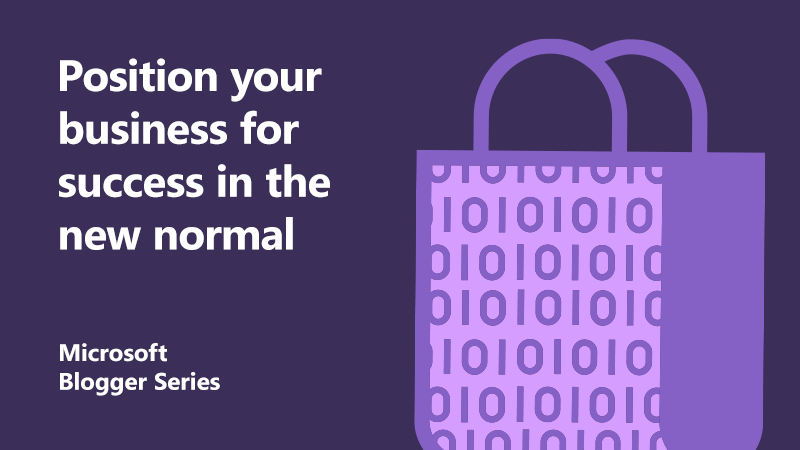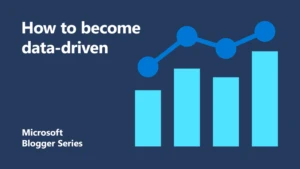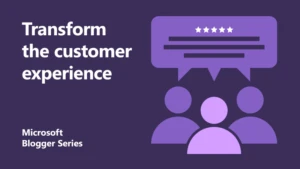
How a modern data strategy can position your business for success in the new normal
 During the past few months, the retail industry has changed significantly due to the far-reaching impact of COVID-19 and how we as consumers are responding to it. The almost overnight shift to digital has forced retailers to make incredibly difficult decisions around how they adapt. There’s been drastic shifts in demand, store closures, evolving customer needs, and many other unforeseen circumstances. So how can a data strategy help you become more adaptable?
During the past few months, the retail industry has changed significantly due to the far-reaching impact of COVID-19 and how we as consumers are responding to it. The almost overnight shift to digital has forced retailers to make incredibly difficult decisions around how they adapt. There’s been drastic shifts in demand, store closures, evolving customer needs, and many other unforeseen circumstances. So how can a data strategy help you become more adaptable?
What’s now becoming clear is the need to evolve and cope with the pace of change. Industry experts are encouraging retailers to use data to look at the next horizon and reimagine their business. The changes they implement today can better position them to take advantage of the higher intensity digital economy going forward.
We’re seeing that retailers are now asking themselves: “What can I do that will help me right now, but will also position me well long-term?” This will help them position themselves to win not only today, but also tomorrow.
Using a data strategy to drive business change
I’ve had the opportunity to speak with Henry Crawford, Director at Redkite, who is currently leading their data change consultancy, and was formerly Head of Data and BI at Deliveroo, to understand exactly how they’re advising retailers about utilising their data as an asset.
Firstly, it would be great to hear more about your previous work at Deliveroo. How has this helped shape the guidance you now give to organisations trying to understand and utilise their data?
Five years ago, I set out a vision for Deliveroo to be the most data-driven company in the UK. Our strategy was to use data to provide the very best possible service for customers, riders, and restaurants. As Head of Data and Business Intelligence, I witnessed the reshaping of human experiences through the prevailing mega trends. The emergence of the smartphone and always-on data; heightened expectations for single-click and immediacy; and analogue business models making the digital leap through last-mile technology.
Now, as a Director at Redkite – the leading data change partner to data leaders – I spend my time helping Europe’s leading enterprise and hyper growth organisations to grapple with these continuing trends.
How does that experience of acting on mega trends for a young hyper-growth organisation compare to the disruption we have seen across all domains in 2020?
2020 has unveiled the next normal. A few months in, we are now glimpsing the new mega trends that are poised to be as transformative in the 2020s as those we witnessed over the past decade.
 As you say, we are indeed in a time of huge transformation. How do companies now position themselves for success in the so-called new normal?
As you say, we are indeed in a time of huge transformation. How do companies now position themselves for success in the so-called new normal?
The closure of brick-and-mortar stores has driven a shift into digital channels: e-Commerce, apps, video, and social. Every retailer and consumer services company I speak with is experiencing a similar pattern. “Digital customer engagement and sales are up by 700 percent” said one CEO. Everything we see tells us that human behaviour is being rewired permanently.
For any organisation to thrive in this new environment, they must ensure that each and every customer feels they are receiving a truly personalised experience.
I am sure this presents a challenge in a completely digital marketplace for many organisations?
The channel shift to digital represents a threat to the many firms that are not capturing an end-of-end view of customer behaviour. They cannot tailor customer interactions and create empathetic customer experiences. As Harris Poll research demonstrates, 63 percent of consumers expect personalisation as a standard of service, a proportion which can only increase as digital channels become more crowded – yet few brands are achieving this consistently across all touchpoints.
Delivering a truly personalised customer experience is a huge undertaking. How would organisations begin to address that need for personalisation on an enterprise-level?
Personalised customer experiences can be readily achieved through modern customer data platform (CDP) technology such as Dynamics 365 Customer Insights. We are seeing profound revenue, lifetime value (LTV) and margin benefits to those enterprise and hyper growth companies that embrace true personalisation. “Our understanding of the customer has flipped entirely – known behaviour is changing rapidly,” said a Transformation Director. Fractures are emerging between the in-work and the retired; the knowledge workers and the frontline; and the asset owners and experience renters. Each and every customer deserves to be understood and interacted with as an individual.
In your opinion, how can businesses pivot this unique set of challenges into future success?
 The CFOs we speak with are expecting volatility to be a characteristic of the next normal. Indeed, leading CFOs embrace volatility as a source of competitive advantage. Those that stand to gain are the companies that have created end-to-end visibility of their supply chain and route-to-market; that have shifted from make-to-stock to make-to-order; and that are equipped to redeploy budgets, inventory, and focus towards the emergent sources of value.
The CFOs we speak with are expecting volatility to be a characteristic of the next normal. Indeed, leading CFOs embrace volatility as a source of competitive advantage. Those that stand to gain are the companies that have created end-to-end visibility of their supply chain and route-to-market; that have shifted from make-to-stock to make-to-order; and that are equipped to redeploy budgets, inventory, and focus towards the emergent sources of value.
With most businesses facing a scrambling of their supply chains and routes-to-market, there is an urgent need to understand product movement all the way through from raw material supplier to the ultimate consumer.
One consumer products company counted over a dozen strategic business priorities blocked on this visibility – all the way through from consumer demand forecasting, customer planning and trade investment optimisation; to key accounts management, availability, inventory optimisation and net revenue management.
How do enterprise organisations adapt and act quickly when traditionally, larger organisations can struggle with agile behaviours?
In my time at Deliveroo, we saw exponential growth. Revenues at over 650 percent per annum, expansion into dozens of new cities each quarter, and the onboarding of a wave of talent, globally. All of this was possible only because we embraced automation at every step.
Automation unlocks a compound benefit through lower operating costs, heightened data quality, reduced management burden, and faster cycle times. The winners in the next normal are those that shun business process outsourcing in favour of true business process automation – and so realise the unbeatable, compounding competitive advantage of strongest agility, quality, and understanding at lowest possible cost.
And finally, what do you see as the mega trends coming out of 2020?
In some respects, the mega trends shaping the next normal are not profoundly different from those of the recent past. What’s different is the velocity of change. The clock speed of business has sped up 10x, and we are now seeing executive teams bring forward their medium-term roadmaps at an unprecedented pace.
Subscription models. Personalisation. Next best action. Direct to consumer. Automation. Demand sensing. End-to-end planning. Made to order. Manufacturing execution. Control Towers… Digitalisation is now more important than ever and is enabling market leaders to move from surviving 2020 to winning in the next normal.
How a data strategy can help win in the next normal
Whoever you are, a modern data strategy will enable you to identify the business opportunities created by the next normal, the priority data and analytics assets that you will want to put in place, and the data operating model and roadmap that will unlock them. If you would like to explore this topic further, see our recent webinar series for information and materials shared on the topic, or contact Henry directly.
Find out more
Download the eBook: Four ways to maximise your business intelligence investments
Read more: Learn how to become data-driven
Register for the webinar series: Change with data
Tools to empower your development team
Read the blog: How to use a modern data warehouse solution to drive better business outcomes
Explore the learning path: Implement a data warehouse with Azure Synapse Analytics
Join a webinar: Transform your organisation from simply data-driven to insights-driven
About the author

Jodie is an Advanced Data and AI Specialist aligned specifically to our Retail and CPG customers across EMEA, helping to accelerate their digital transformation journey. She is passionate about the opportunities that technology creates through digital transformation, with data and analytics strategies playing a key role.
Starting her career with a Computer Science BSc Honours, Jodie has worked in a wide range of industries before joining Microsoft in 2017 as a Partner Technology Strategist and then most recently shaping the UK Azure Analytics Business & GTM strategy as the Analytics Product Marketing Manager.

Henry has spent the last decade using data to accelerate hyper growth companies. He built Deliveroo’s data and analytics function from scratch, growing the team from two to over 40 FTEs in 18 months. Henry holds a BSc in Physics from Imperial College, and a MSc in Nanotechnology from University College London.




